Crossing a Cultural Divide
If we could take a trip back in time it would be very much like a visit to another culture. Cultures are living entities and like families and the individuals that comprise them cultures change. What was common, acceptable, even expected and lauded 100 years ago may well be unacceptable and even a bit nauseating to us today. Sometimes change is good, sometimes it is bad, and sometimes it is just different.
An old photograph can take us on a journey to another culture. I took such a journey recently thanks to a photograph I received from the Willamette Heritage Center. I have already written about the journey this photograph took to find me, now I am writing about where the photograph has taken me.
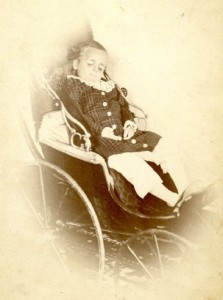
This photograph caught my eye because, in our modern world, it is quite macabre. It is a photo of a beautifully dressed child in a stroller. It looks fairly normal at first, but the child is dead.
The child is William F. Martin. He was born in August of 1877 in Muskegon, Michigan and he died there in September of 1881 of “congestion of the lungs”. He was one of six children born to William Martin and Rosa Cleantha Blood. One of his older sister’s was my husband’s grandmother. What drove them to take their dead child, dress him in his best clothes, put him in a life-like pose and have this picture taken? The answer is custom. Postmortem photography was quite common in the Victorian Age, for both children and adults. An early photographer’s advertisement said, “secure the shadow, ere the substance fade”. Securing the shadow slightly after the substance had faded became the custom. Adults were generally pictured in bed or in the coffin, but children were posed, often with their families. Here is another example from Stanley Burn’s Sleeping Beauty: Memorial Photography in America. These are two postmortem daguerreotypes of the same child.
Another oddity of Victorian mourning is jewelry fashioned from the deceased’s hair. These pieces might just be a lock of hair encased in glass or truly elaborate necklaces and bracelets of woven hair. A bit repulsive to us , but a declaration of love and loss to those who wore it.
Here are two examples. Both are made of human hair with gold embellishments.
The young William Martin lived in a time when people did not die in order as we expect today. Most of us expect to bury and mourn our parents, but not our children.
It has been said that in times when medicine was mostly useless and death was common that life was cheap and the pain of loss less deeply felt. Anyone who has wandered through an old cemetery and read the tender inscriptions on the tiny tombstones or considered the photographs and jewelry on this page will be forced to a different conclusion.
Thanks to the Willamette Heritage Center for the use of the picture of William Martin, their catalog number P 2012.011.0023

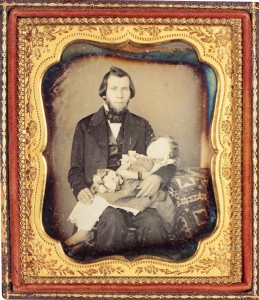
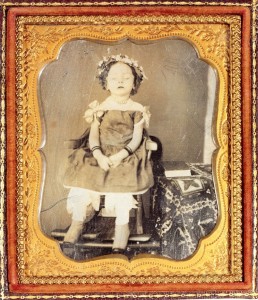
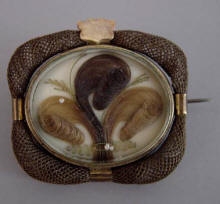
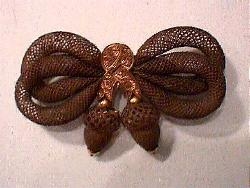
Thanks to everyone there for all the photos and for finding me
I have a photo of my 2nd great-grandmother and probably her first child who died as an infant. I never looked at it closely until after reading an article about photographing the dead in a genealogical magazine. Sure enough the child’s eyes are closed. The photo is from the early 1850s.